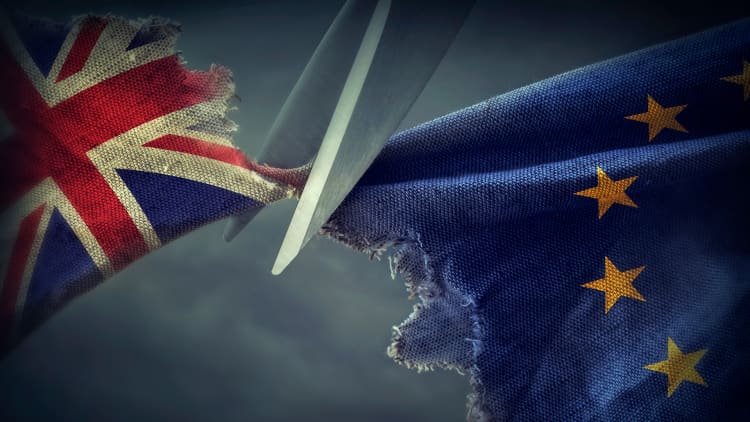
Britain's embattled Prime Minister Theresa May is still seeking concessions over the nature of the Irish border post-Brexit, with less than 50 days to go before the country is scheduled to leave the bloc.
Brexit has gripped British society for nearly three years, but the overarching question remains just as clear as when a small but clear majority voted for the world's fifth-largest economy to leave the EU in June 2016.
Can Britain resolve the Irish border row and leave the EU without abruptly breaking all political and economic ties with the bloc?
CNBC takes a look at the so-called Irish backstop dominating much of the debate.
What does a backstop mean?
The backstop plan is essentially a legally-binding insurance policy to ensure there is no hard border between Northern Ireland and the Republic of Ireland whatever the outcome of future trade talks between the U.K. and the EU.
Presently, there are no customs or regulatory checks on goods passing between Northern Ireland, which is part of the U.K., and the Republic of Ireland.
That's because the EU's single market and customs union arrangements make it easy for people, goods and services to cross the border, with both nations following a similar set of rules and regulations.
However, there are fears on all sides of the political spectrum that Britain's departure from the EU at the end of March could lead to an increase in safety checks, delays and surveillance at crossing points on the island.
What has May proposed?
Britain's draft withdrawal agreement says the U.K. should stay closely aligned to current EU rules by default to preserve the largely open Irish border.
The Brexit deal — which still requires parliamentary approval — includes a two-year transition period with both sides hopeful of securing a comprehensive trade pact after that.
The backstop policy would see the U.K. effectively remain in a European-wide customs union from December 2020 until such a trade deal had been agreed.
The U.K. and the EU both signed up to the idea of a backstop in December 2017.
Both sides also agreed to what the safety net policy needs to achieve, including maintaining cross-border cooperation, supporting Northern Ireland and Ireland's respective economies, and — crucially — protecting the Good Friday peace agreement.
The Good Friday Agreement, which was signed on April 10, 1998, was developed to ensure peace between Northern Ireland and the Republic, as well as the Common Travel Area and the rights of U.K. and Irish citizens.
It led to the creation of an elected assembly in Belfast and ended decades of sectarian bloodshed in Northern Ireland.
Why does it matter?
There is a broad consensus across the U.K. and the EU that the Irish border must remain as open as possible. That's because many fear Brexit discussions could trigger tensions behind "The Troubles" — a 30-year conflict over Northern Ireland's status as part of the U.K.
Pro-Brexit supporters are deeply concerned that the proposed backstop would leave the U.K. tied indefinitely to many EU laws.
Whereas, some lawmakers have called for a Brexit arrangement with even closer ties to the EU, and others want the U.K. to hold a second referendum in the hope of reversing the whole process.
Such deep parliamentary divisions has made the country's political and economic future as uncertain as ever.
What happens next?
Britain's prime minister still requires parliamentary approval for her deal.
A majority of the U.K. Parliament rejected May's Brexit deal with the bloc in January, largely because of opposition to the "backstop" policy.
To be sure, the pressure for May to get concessions from the EU over the backstop is extremely high in Westminster.
If there are no changes to the withdrawal agreement, the deal remains unapproved and the risk of "no-deal" Brexit increases — this refers to the now infamous "cliff-edge" scenario where Britain leaves the EU abruptly on March 29 with no 21-month transition period and reverts to WTO trading rules.
If May can extract some concessions, a second parliamentary vote on the Brexit deal (known as a "meaningful vote") could be held at the end of February, the Telegraph newspaper reported late on Wednesday.
But, if the deal is rejected again then it leaves little time for any last-minute negotiations and Parliament could end up requesting an extension to the departure date.
— CNBC's Holly Ellyatt contributed to this report.


